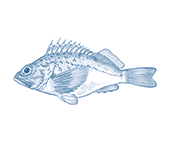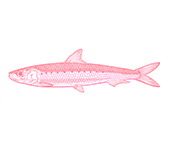




- Better Choice
Wild Caught
Region:
VIC
- King George whiting are caught in VIC, SA and WA. Stocks are mainly considered healthy.
- King George whiting grow and reproduce quickly and so are relatively resilient to fishing pressure. Stocks are thought to be healthy in Victoria.
- It is caught by lines and haul nets in coastal waters. These methods of fishing generally have low impacts on marine habitats and threatened species.
- The Corner Inlet fishery where the majority of whiting are caught in Victoria, has been operating with a code of practice since 2020 to limit effort to assist with the sustainability of stocks, and minimise bycatch (the accidental catch of non target species) and habitat damage.






King George Whiting is the most highly-regarded of all the Whitings, prized for its firm, clean, sweet-tasting white flesh and its delicate flake. Very fresh specimens can be thinly sliced or diced and eaten raw as sashimi or in a ceviche. They are great to pan fry or BBQ whole or as fillets. Whiting can become dry if overcooked, so a coating such as a crumb or batter is often used to protect the flesh from direct heat. Try pan frying or deep-frying after coating. Whole fish can be baked in the oven with a little oil, lemon and salt. Whiting’s delicate flesh also suits it to steaming, which will help keep it juicy and moist.
- Corner Inlet Fishery, Port Phillip Bay Fishery, Ocean Fishery (163t in 2019/20)
King George Whiting are found throughout southern Australian waters. The juveniles are found in shallow southern waters and migrate to deeper waters when they reach adulthood. The species predate on worms, molluscs and crustaceans. The Victorian stock is healthy, and fishery managers monitor seagrass beds annually to count juvenile fish, allowing future catches in the fishery to be predicted and carefully managed.
Measures instigated by the Corner Inlet Fishery to limit bycatch include fishing at night (which reduces seabird bycatch), devices in their nets which help bycatch escape and the use of in water sorting of catch in their nets leading to the release of bycatch. These practices help ensure a high survival rate of species that have not been targeted.
The fishery operates within a RAMSAR listed wetland, making it habitat for a range of protected bird species. ‘No-take’ zones within a marine park in the region provide additional protection for marine species.
King George whiting are mostly caught in haul nets in coastal waters. These types of fishing methods generally have low impacts on marine habitat and threatened species, although increased reporting by independent fisheries observers would provide additional confidence in reporting of endangered species interactions.


